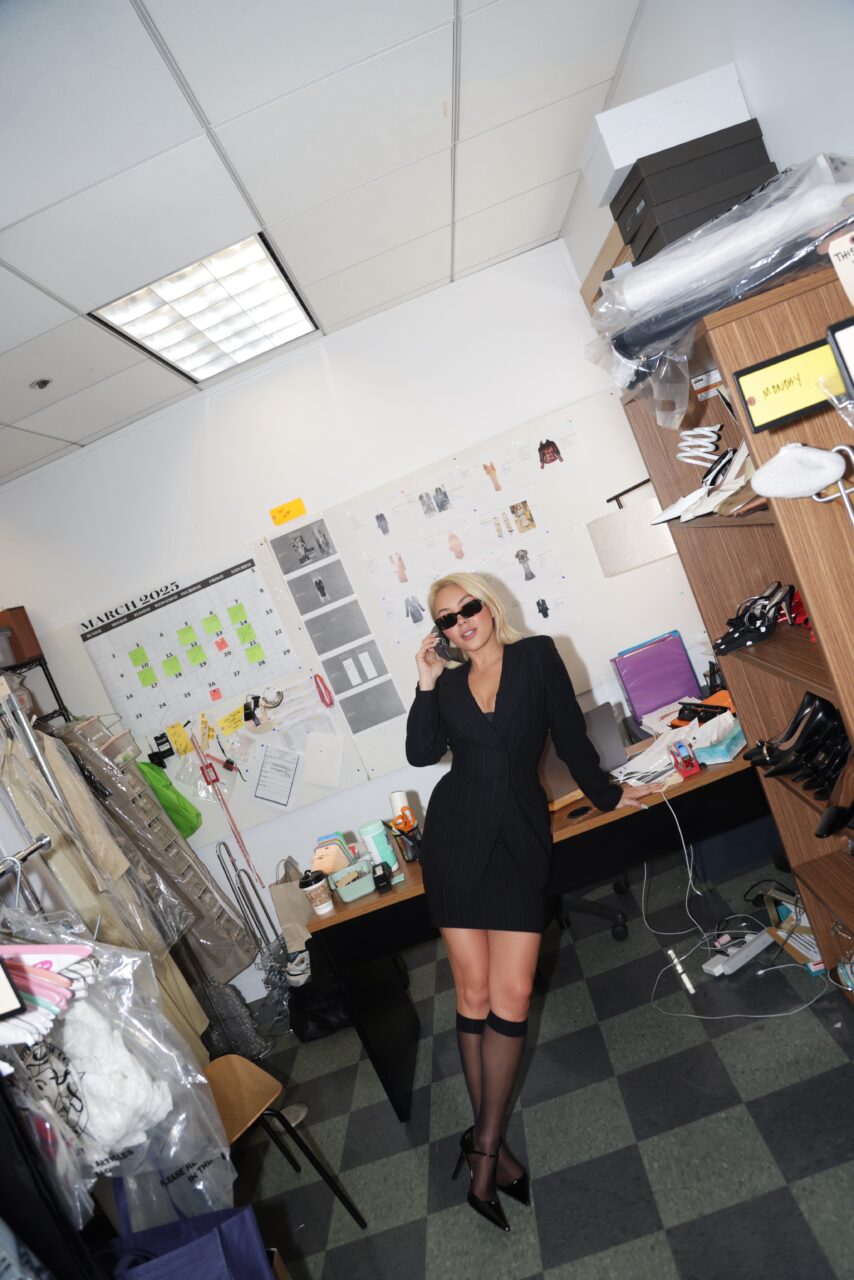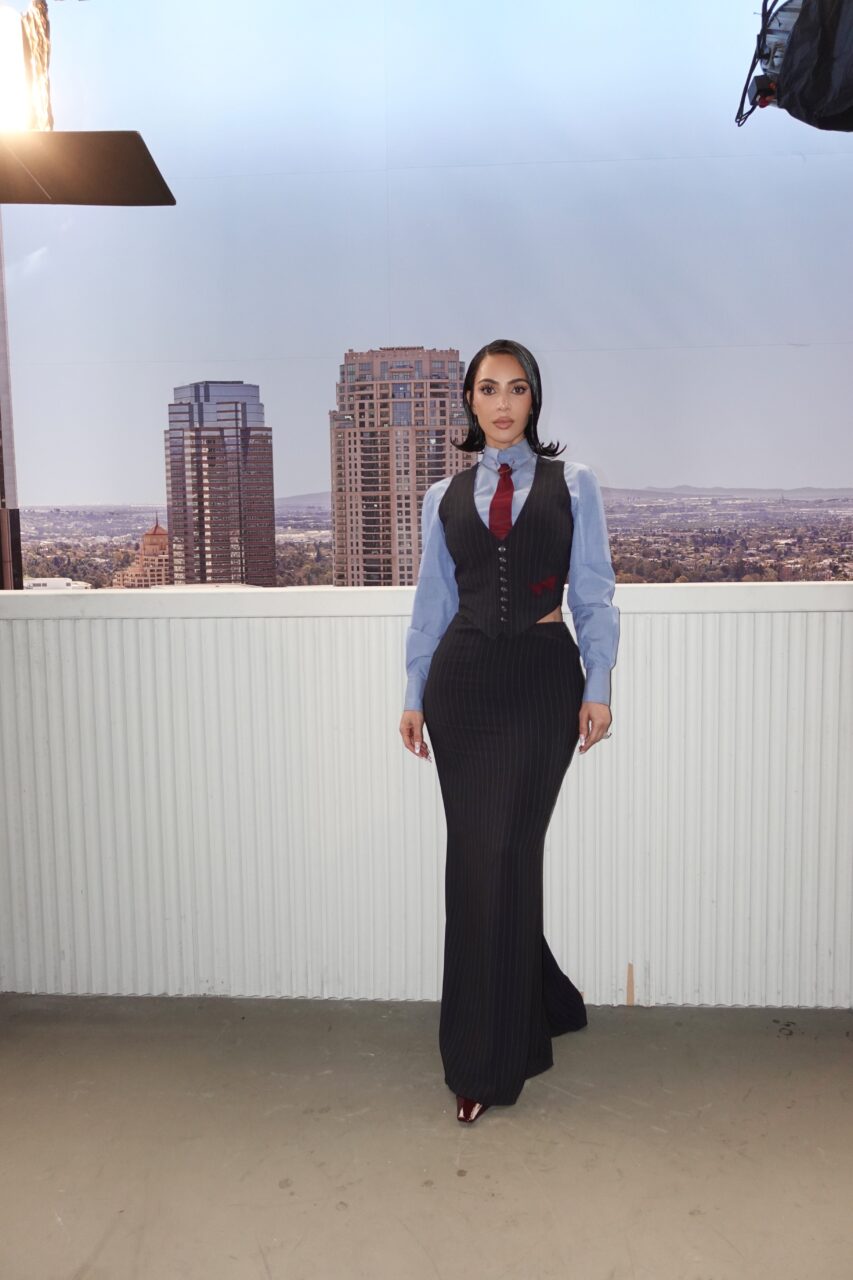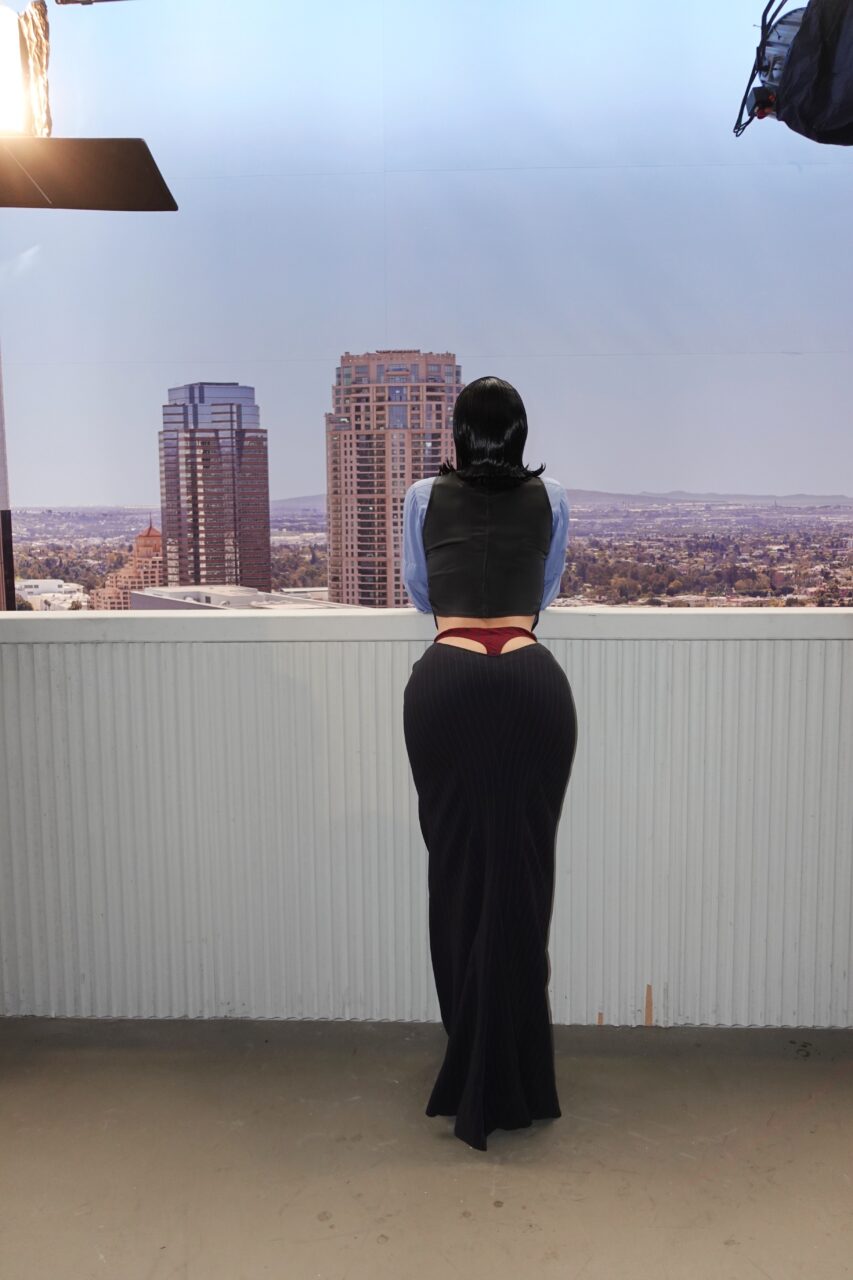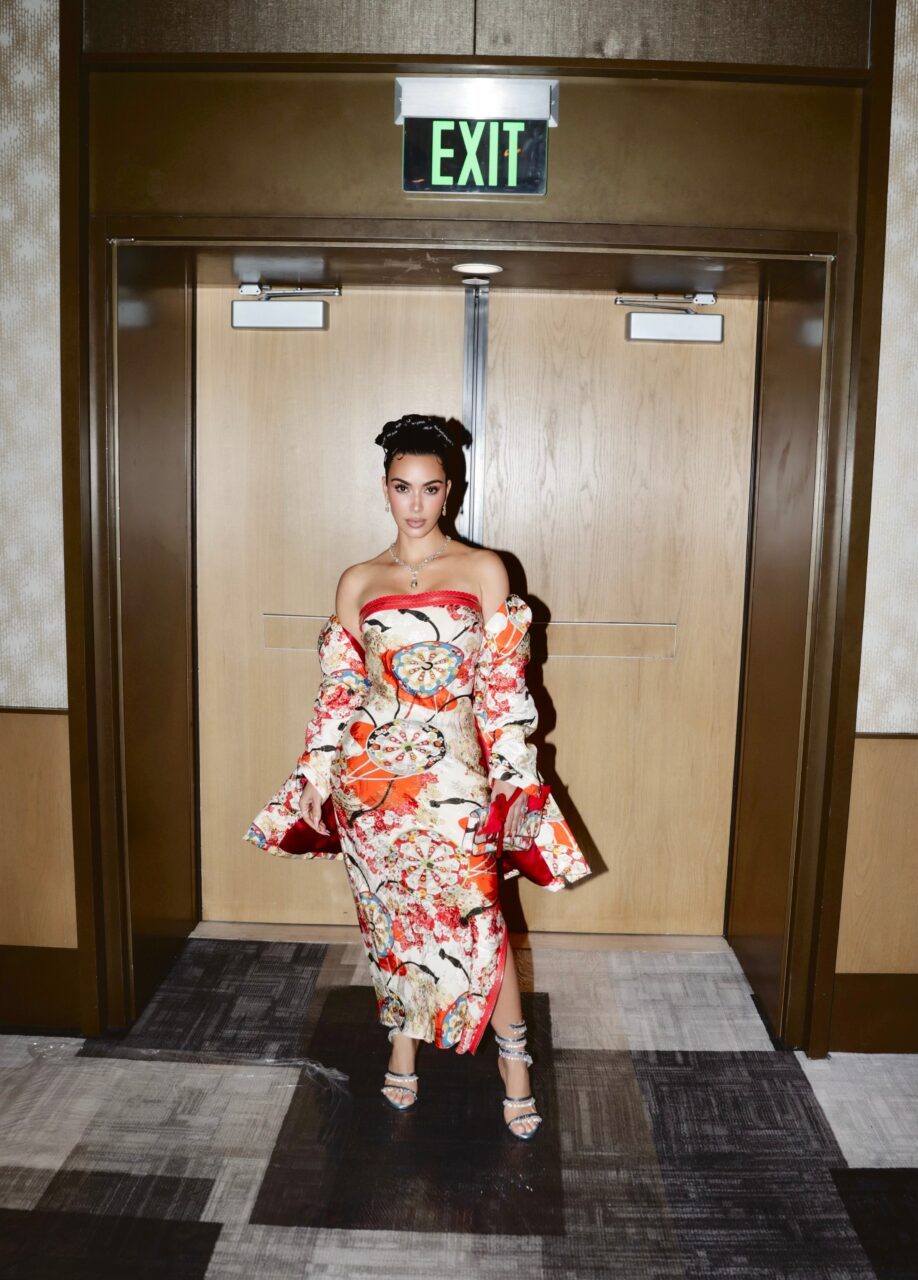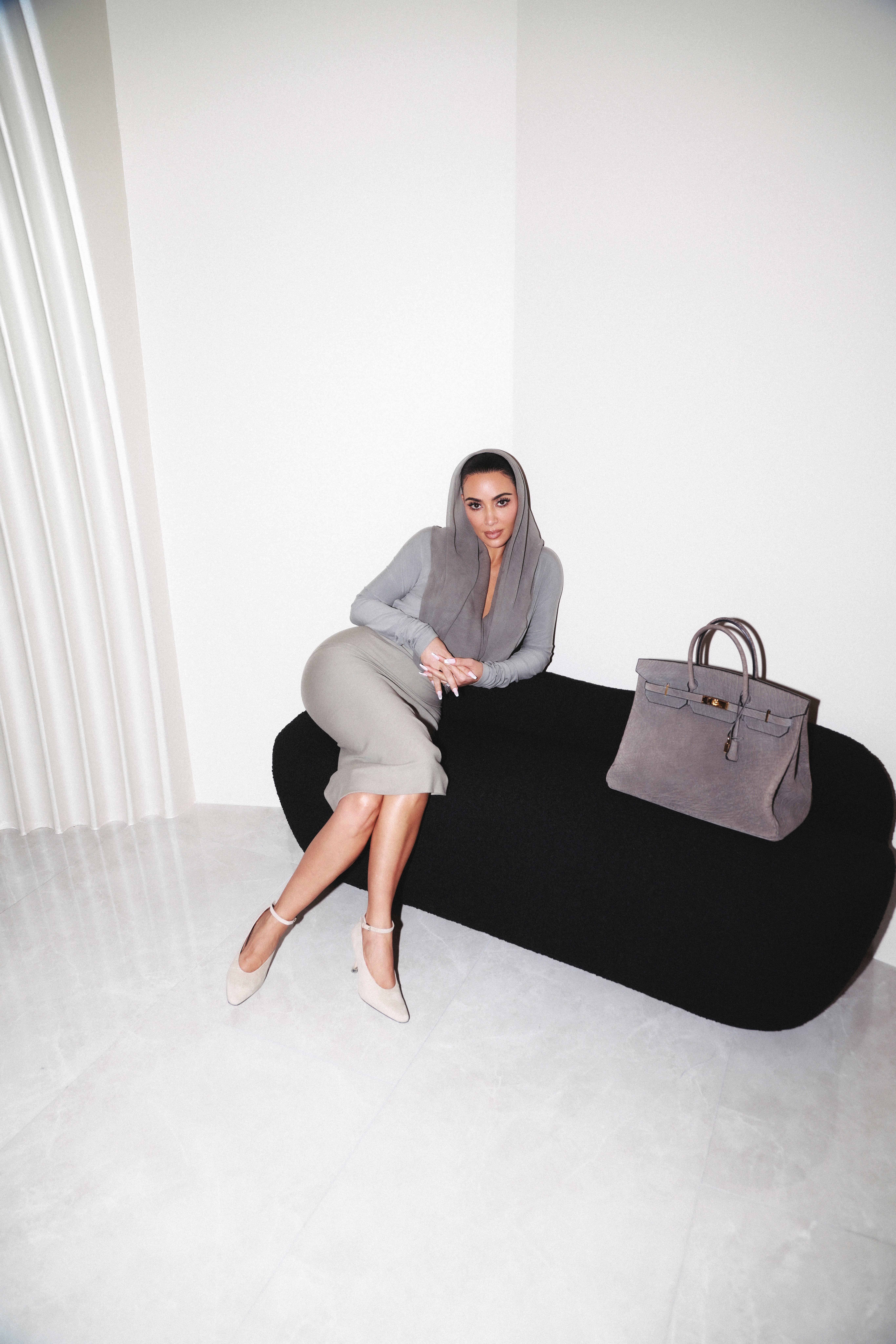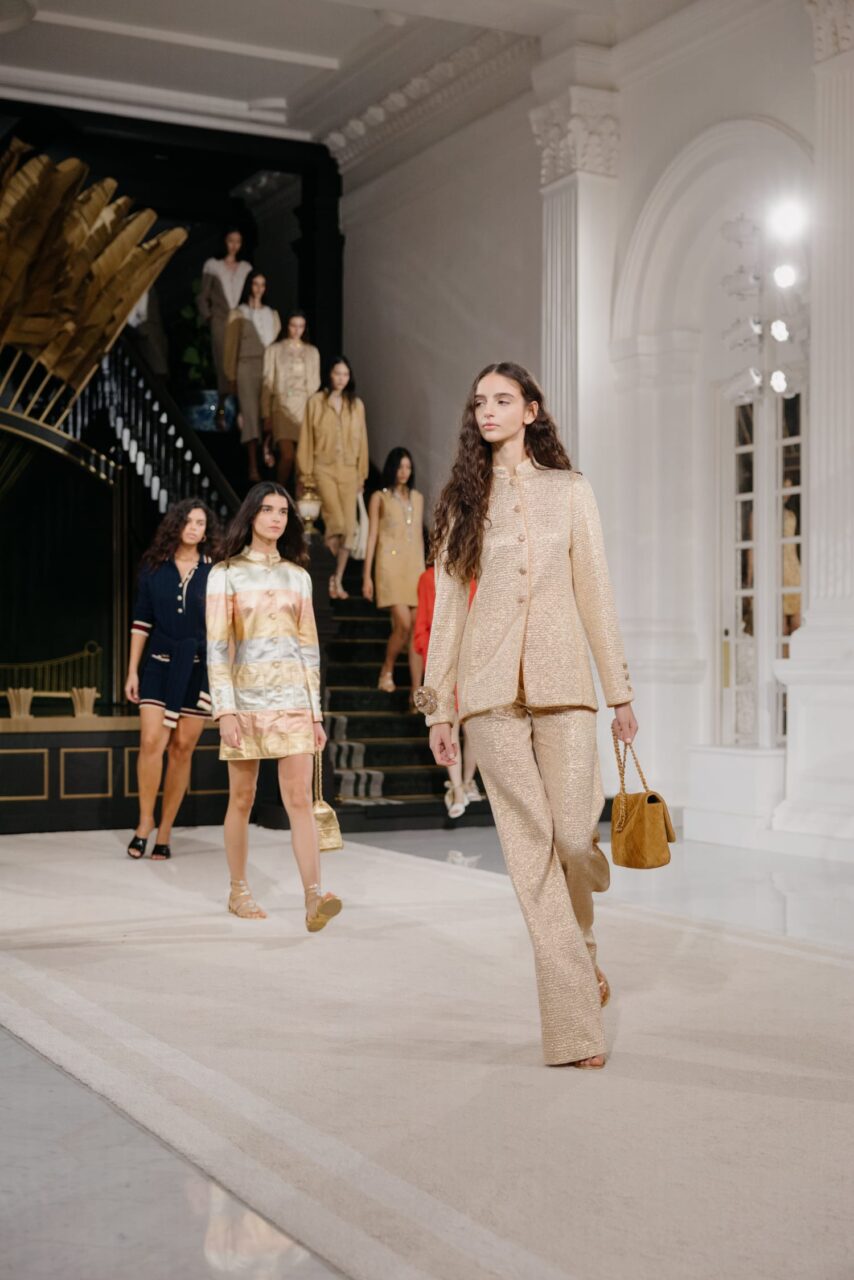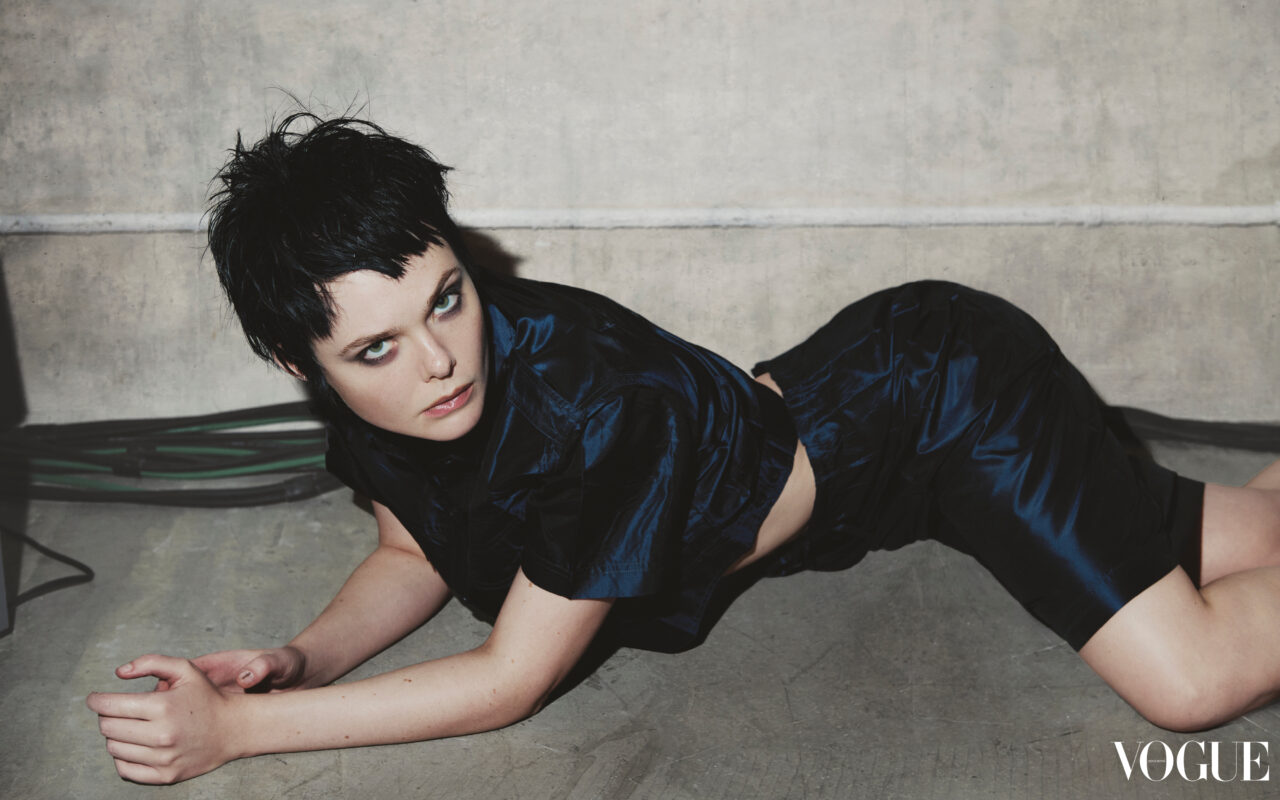When Kim Kardashian first envisioned playing Allura Grant in Ryan Murphy’s Hulu legal drama All’s Fair, she knew the wardrobe would need to do more than just look good. It had to tell a story.
“I knew the costume design for this role had to be a character in itself—strong, timeless, and undeniably powerful,” Kardashian explains.
After all, Allura Grant is no ordinary lawyer. She’s a woman at the top of her game, navigating the pressures of a high-stakes career while married to a partner resentful of her success. Her personal and professional lives collide in a world where money talks, love is a battleground, and power comes at a cost. Simply put, women like Allura don’t just play the game—they rewrite the rules.
While most lawyers wouldn’t dare take risks in the courtroom, Kardashian’s Allura flaunts her unapologetic style in vintage John Galliano, Mugler, Donna Karan, and even a butt-baring Jean Paul Gaultier look. Much of this bold vision can be credited to Soki Mak, the Scottish-born stylist with Hong Kong roots who Kardashian tapped to help conceptualise Allura’s wardrobe via a simple Instagram DM.
“Honestly, when I first opened the DM from Kim, I thought it was a fake profile,” Soki admits. “We collaborated on a couple of projects together before the All’s Fair opportunity came around. Everything was moving at such a fast pace that I didn’t really have time to digest the magnitude of the opportunity and what I was about to embark on. It was all very last-minute.”
Kim Kardashian in Mugler Spring/Summer 1995
Photo: Courtesy of Soki Mak
With no prior TV experience, Soki brought her fearless approach to styling into the world of costume design, creating Allura’s unapologetic, hyperreal wardrobe. Pulling archival treasures from Jean Paul Gaultier, John Galliano, and Balenciaga, alongside custom pieces like Milligan Beaumont’s lavender-scented kimono, she embraced the challenge of translating bold, campy glamour for TV.
“I thought Soki was perfect for this as we share a very specific visual language, rooted in the exaggerated, bold glamour of ’60s and ’70s cinema,” Kardashian shares. “Soki isn’t afraid to push boundaries, she understands my vision & we have fun with it. The goal was to create a woman who is in command, whose confidence, intelligence, and curves are amplified by clothes that are timeless yet fun. I guess you could say Allura is a hyper-realistic version of me.”
In this exclusive interview, Soki Mak opens up about collaborating with Kim Kardashian, the challenges of working on her first TV project, and how her creative vision brought Allura Grant—and the world of All’s Fair—to life.
Kim Kardashian in Donna Karan Fall 2011
Photo: Courtesy of Riley Taylor
As the stylist behind the image of Kim’s character, Allura Grant, if you were to describe Allura in three words, what would they be and why? How did the looks you built for her embody those qualities?
Powerful, confident and free.
We knew the show would be a talking point, regardless of whether it’s to someone’s taste. What we were trying to convey with Allura is that she doesn’t give a shit what other people think. She knows exactly what she likes and doesn’t follow trends. She has her own style and has fun with it. The confidence comes with a woman who can wear clothes, not let them wear her. There’s a sense of freedom in that, and I think that you can see that when Allura walks down the hallway in the law office, she exudes confidence. These outfits were obviously exaggerated for TV, especially the Jean Paul Gaultier look with the thong detail. I know a lot of people on set were also confused, but Kim and Ryan [Murphy] got it straight away.
This show isn’t reality; it’s a hyper-reality, and that’s the whole point of the show: it’s camp, it’s fun, and it’s sexy, and it’s supposed to grab everyone’s attention. The reference is exactly as Ryan presented. If you understand the old Dynasty shows, the looks are sort of ridiculous, and this was exactly as it’s supposed to be. That’s the beauty of TV as a creative medium, but you can never please everyone, and that’s also the reality of putting any art, fashion, TV or film out into the world.
You’ve pulled from archives of the likes of Jean Paul Gaultier, John Galliano, and Balenciaga. How did you decide which pieces would work for Kim’s character and the world of the show?
Honestly, it was one of those let’s just go for it and try. Ryan Murphy is the king of camp and fantasy on TV, so when this was put in front of me, I thought: Let’s push it as far as we can. So bringing in designers like Jean-Paul Gaultier, John Galliano, and Alexander McQueen leans into that idea of costume and fantasy.
We also weren’t trying to follow fashion here. I feel like if we were trying to make it strictly about fashion, we would go with what’s current and be a little bit more modest with some of the looks, but again, this is TV, and to translate to TV, everything needs to be exaggerated. When you’re creating a character, especially a character for a show like this, you have to sort of lose your mind a little. Like a new-age, old-Hollywood film, it’s meant to get everyone talking and be theatrical. There is so much history around each and every one of these looks.
What was it like collaborating with Kim, both on and off the set? How much input did she have in the wardrobe decisions for All’s Fair?
Kim is one of the most chilled-out and easiest people I’ve ever worked with. She completely understands the creative process of building a character and trusts it—especially the in-between moments when many creatives can see the vision, even if it’s unfinished. She’s very hands-on and involved because she’s taken a lot of risks and worked with some of the most obscure creators. I never felt like I was texting her too much—she loves the collaboration process.
I would share mood boards with Kim, which she really loved, and my approach was always to push the looks to the max creatively to ensure we had a strong narrative. I’d usually prepare three options: one that was bold, one that was more neutral, and one that was safer. If the original felt too extreme, we could tone it down. Kim understands this process of building up a character and refining the details, so overall, she was very easy to work with.
One of the looks was a custom-made Milligan Beaumont kimono, which is a scented garment. What inspired you to incorporate scent into the show’s looks, and how do you think it enhances the storytelling?
When I started working on the show, I made a point of not buying anything from a store—a decision I naively made before realising how last-minute TV production can be. It made things ten times harder for myself, but I wanted to ensure that everything was custom-made, one-of-a-kind, or archival. All rare. I also prioritised working with some of my favourite independent designers so they could tell their stories and have this platform to showcase their work.
I was so happy with Milligan’s look, though I can’t take much credit—it was all Milligan! Unfortunately, it was cut from the show, which both Kim and I were frustrated about because it was probably one of the most dramatic looks. The turnaround on the garment was insane. It was early in filming, and we were just getting into the groove of everything when I was told we needed a robe for a bathroom scene. Of course, I wasn’t going to buy a robe from a store, so I contacted Milligan. I remembered seeing a Japanese-style robe in her graduate collection years ago, and this felt like the perfect moment.
Not only did she stuff the cuffs and lining of the kimono with lavender, but she also hand-beaded these beautiful naked women onto the garment, which you can see in close-up images. Inside the tag, it even says “Kim”ono—her attention to detail was incredible. Hopefully, we’ll get to share that look with the world soon.
How did you approach designing both the on-screen wardrobe for Kim’s character and her press tour looks? Was there a throughline connecting the two?
No, I would say they were definitely quite different. With Allura, her energy was a reflection of Kim—she’s very powerful, intelligent, and sexy. She knows her brands, the history, she’s creative, and she has access to the rarest pieces around. The campness of the colours and all the exaggerated details, however, are things Kim wouldn’t usually wear—this was very much Allura’s character.
For her press tour looks, I would say Kim has definitely had more fun. I think that’s because we speak a similar visual language, we understand each other, and I push her a little. There’s an element of trust there. I feel like the transition in her personal style just happened to align perfectly with this moment.
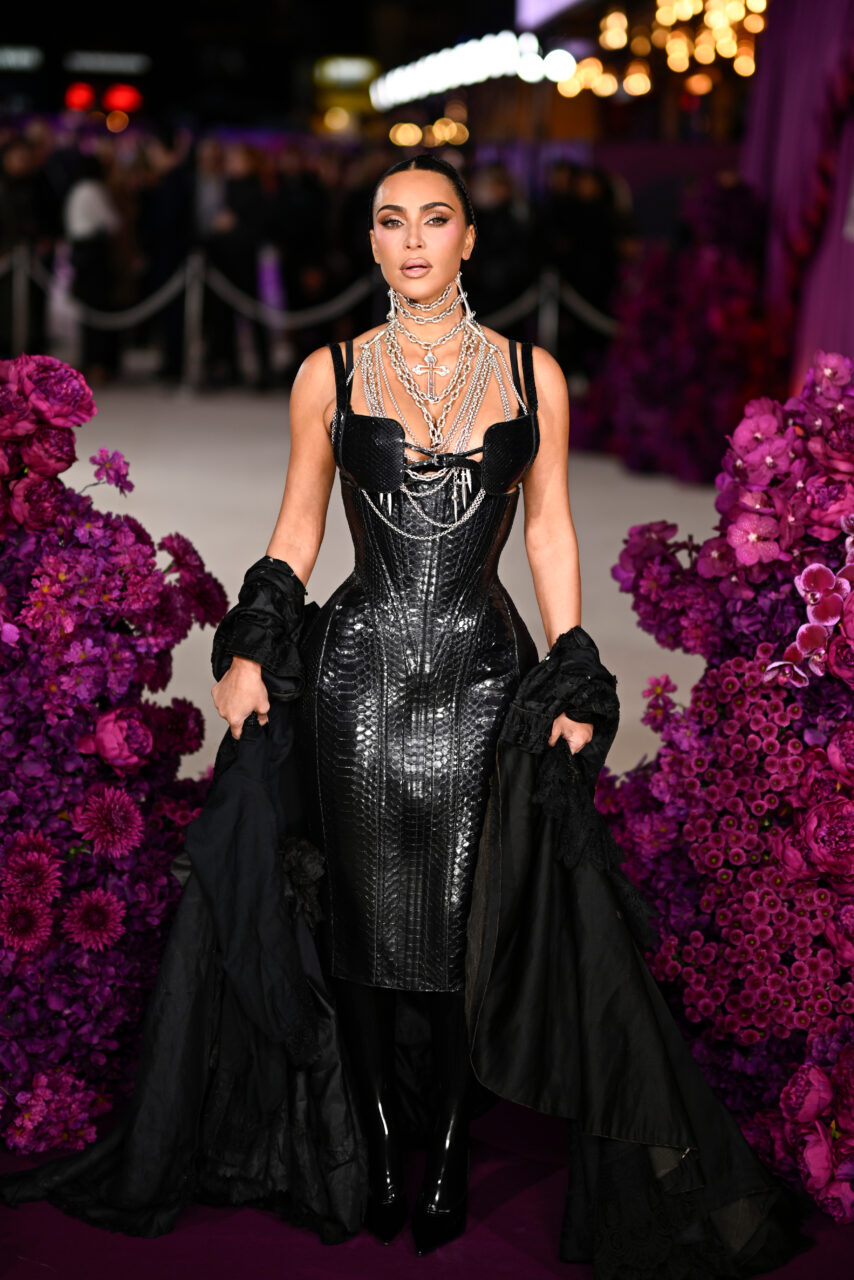
Kim Kardashian attends the "All's Fair" London Premiere at Odeon Luxe Leicester Square in London wearing Dilara Findikoglu, styled by Soki Mak
Photo: Gareth Cattermole/Getty Images
Coming into this project with no prior TV experience, what were some of the biggest challenges you faced, and how did you overcome them? On the other hand, did you find it freeing not to know the ‘rules’ in an industry where you’ve had no formal experience?
I feel like my naivety about what I was stepping into actually helped me because there was so much to learn in a very short space of time. I was also very open to learning and was lucky to have a really big team of women around me who were incredibly supportive. They opened their arms, answered all my questions, and were really lovely to me.
The biggest challenge I faced was proving that I knew what I was doing. Creatively, I know what looks good, I know what brands to use, I know Kim’s body, and I know what she likes. But because I had no experience in this field, the hardest part was getting people to believe that I could do this. On top of that, the lead time was always tight. We had very little prep time or notice, and a lot of these clothes came from all over the world—they weren’t things you could just buy in a store. Having so little time created a lot of chaos, and I think if I’d had more time, it would have been a very different experience.
When you’re a creative and used to working on editorials or other creative projects, there’s an element of ‘if you don’t ask, you don’t get.’ If you don’t push and try, you might miss an opportunity to get ‘that shot,’ and that mindset actually helped me here. If I ask and someone says no, I can move on. But if I don’t ask, and I know it could’ve been something incredible or life-changing, I’ll always have that nagging feeling in the back of my head that I should’ve pushed harder to make something extraordinary.
How would you describe your creative philosophy as a stylist? What inspires you?
I believe that creative people need to take breaks and have moments to decompress. It’s something I always stand by because I’ve noticed that if I go from project to project too quickly, I end up overanalysing my work and feeling unhappy with it. After any high-profile or high-stress job, I have to take myself somewhere completely different from where I’ve just been. I often end up in Asia.
When I finished filming All’s Fair, after seven and a half months of intense pressure and work—which I loved—I immediately went to Hong Kong. Being surrounded by the chaos, the fashion, the style, the culture, and real people, along with the markets and nature, is what I need to reenergise before jumping into something new. For me, having time in between projects is the only way to make this sustainable. I hope to have a long career, and this practice helps me keep my love for what I do.
Editor
Kaitlyn LaiCredit
Lead Image: Courtesy of Soki Mak